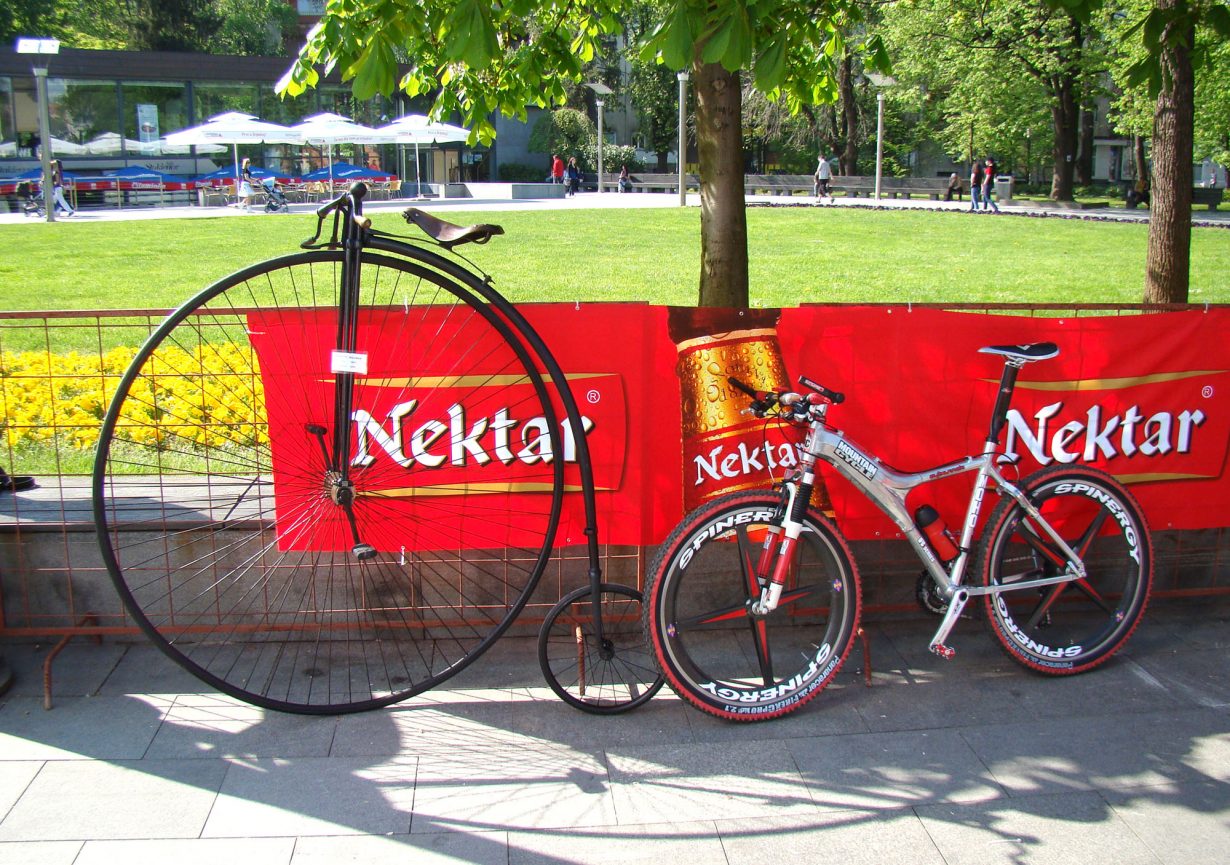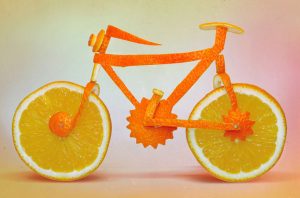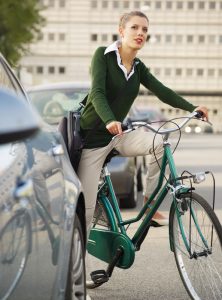It is by riding a bicycle that you best learn and memorise some terrain.
– Nikica Atlagić
Bicycle is simply ingenious! It allows you to move in a very efficient way, at a speed that allows you to see everything around you, feel the wind, sounds and smells, experience great pleasure when you overcome a hill or a mountain pass, gain adrenaline kick when flying downhill, escape the city rush and enjoy the nature, go where you could never go by car or ride a daily distance that is more than respectable for the aforementioned car. Practically, once you try it yourself, you will stop asking others: “How can you be bothered to ride so much?” and you will only answer such questions with a smile, when asked the same question.

I often repeat the above quote, especially after my ride to the seaside back in 2008. It turned out that the award-winning writer Ernest Hemingway had made a similar quote a long time ago, although I’m sure he didn’t write texts about cycling :). You will remember it when you ride a section that you have traveled a million times by car and thought you knew the terrain configuration and distances very well.
Anyway, since you are reading this text, you have probably decided that a bicycle is a bare necessity for you… but what kind of bicycle exactly?

For starters… let’s go back to the beginning
One of the greatest discoveries in history of mankind, in addition to chocolate milk, is the invention of the wheel. Connect the two wheels, the handlebars, the sic and the pedals – and you get, you guessed it, a bike. And really – since the advent of the bicycle in that shape, with two wheels of the same size, more than 100 years ago – things haven’t changed drastically. Even in the “run on the track” racing discipline, bicycles without brakes and with a fixed gear ratio are still ridden. Some people even ride such bicycles on road. Also, as it happens, I had done the the first official 200k brevet in B&H on a mountain bike with “knobby” tyres, producing a respectable ride time, while more recently I rode a demanding 150 km route using a rental city bike.
Therefore, anything is possible if you want it. However, in order for your rides to be efficient and comfortable, you also need a suitable bicycle.
The “n+1” rule

Any enthusiast will tell you that the ideal number of bikes is n+1, where n is the number of bikes you currently have. And really – each and every bike provides a different feel and riding experience, even within the same category of bikes, not to mention completely different bikes, made for completely different purposes. Therefore, regardless of whether you need a bicycle or another bicycle, it is very important to find an answer to the question of what kind of bicycle do you actually need.
With the exception of children’s, cargo and folding bikes, as well as special competition bicycles (for time trial, triathlon, cyclocross, downhill, etc.), we can differentiate the following main types of bicycles:
- city bikes, with various wheel sizes and brake configurations,
- road bicycles, popularly known as “racing bikes”,
- off road bicycles e.g. mountain bikes,
- trekking, hybrid, gravel and similar bikes.
Riiight. So, what next?
 First of all, we need to make an important cut – does your bicycle primarily serve you as a means of transport or as a prop for sports and recreation? If you ride a bike for recreation and you often find yourself riding away from paved roads, enjoy riding in nature, through forests and mountains and rarely use a bike as a means of transport, then you definitely need some kind of a mountain bike. These bikes experienced expansion in the early 90s of the last century (if you are reading this article in the 21st century :)) and to this day they have seen tremendous amounts of development. In the beginning, they had rigid forks, then front forks with shock absorbers were developed, followed by the rear ones, then with time more and more advanced frame materials were used, hydraulic disc brakes were installed, wheel size got increased… all of that in order to make the bike as well as yourself as fast and agile as possible in overcoming various rugged terrains in the nature.
First of all, we need to make an important cut – does your bicycle primarily serve you as a means of transport or as a prop for sports and recreation? If you ride a bike for recreation and you often find yourself riding away from paved roads, enjoy riding in nature, through forests and mountains and rarely use a bike as a means of transport, then you definitely need some kind of a mountain bike. These bikes experienced expansion in the early 90s of the last century (if you are reading this article in the 21st century :)) and to this day they have seen tremendous amounts of development. In the beginning, they had rigid forks, then front forks with shock absorbers were developed, followed by the rear ones, then with time more and more advanced frame materials were used, hydraulic disc brakes were installed, wheel size got increased… all of that in order to make the bike as well as yourself as fast and agile as possible in overcoming various rugged terrains in the nature.
But the reality is…
 Unfortunately, in some countries, synonym for a bicycle de facto appears to be the aforementioned mountain bike. The name itself suggests that its purpose is not to be ridden from point A to point B in a city environment or for riding it in parks or going out on recreational rides of 20-50-100 km in length on asphalt. However, whether because these bikes became very attractive and popular as soon as they had appeared or because people have a perception of comfort due to “fat tires” and shock absorbers, this type of bike has become a “go to choice” for virtually any purpose, which is not necessarily a good idea.
Unfortunately, in some countries, synonym for a bicycle de facto appears to be the aforementioned mountain bike. The name itself suggests that its purpose is not to be ridden from point A to point B in a city environment or for riding it in parks or going out on recreational rides of 20-50-100 km in length on asphalt. However, whether because these bikes became very attractive and popular as soon as they had appeared or because people have a perception of comfort due to “fat tires” and shock absorbers, this type of bike has become a “go to choice” for virtually any purpose, which is not necessarily a good idea.
If you watch any video clip of cycling traffic in The Netherlands, you can see that 99% of the bikes used are some kind of city bikes, starting with smaller bikes with 20-inch wheels and a “coaster” rear hub or bicycles with 26″ to 28″ wheels, front and rear brakes, with fixed transmission or with rear derailleur with 3 to 6 gears, and as a rule of thumb they come with fenders, dynamo-powered lights and a rear rack of some kinds. This type of bike, with its characteristics, functionality, seating position and comfort, is something you need if you use a bike as a means of transport in or out of towns, on asphalt roads and even for occasional recreational rides of 10-20 km in length. Fortunately, there is a noticeable trend of an increase of purchases and usage of such bicycles in these countries as well.
His majesty – road bike
 If you start doing longer and more intense rides on asphalt roads, you will soon find out that city bike and especially mountain bikes are not suitable for this type of riding, due to their weight, completely unnecessary shock absorbers, high level of tire rolling resistance, inadequate seating position, transmission ratios with too much span and big jumps between cogs, as well as and many other factors, which directly or indirectly negatively affect this type of riding.
If you start doing longer and more intense rides on asphalt roads, you will soon find out that city bike and especially mountain bikes are not suitable for this type of riding, due to their weight, completely unnecessary shock absorbers, high level of tire rolling resistance, inadequate seating position, transmission ratios with too much span and big jumps between cogs, as well as and many other factors, which directly or indirectly negatively affect this type of riding.
Road (or racing) bicycles, roughly speaking bikes with “thin tires and curved handlebars” are designed for efficient riding on asphalt roads, for crossing tens or even hundreds of kilometers “in one go”, either recreationally or competitively. You may think that with certain modifications you can adapt your existing bike for this type of usage and you will be right to a degree but wrong for the best part. We will not deal with this category of bicycles in this article, because we will discuss it in detail in the following text.
Of course, bicycle manufacturers have always tried to reconcile different requirements for the use of bicycles and / or to impose various trends, so in the last 30 years we have seen various bicycles with combined characteristics, eg: trekking bikes, which are something between city and mountain bike; gravel bikes, which are something like road bikes but for off road use; various hybrids, e.g. bikes that have a geometry similar to road bikes, but with flat handlebars and slightly wider tires… and so on and so forth :).
Summa summarum
By now, you have probably realised that choosing and buying a bike is not nearly as simple as you may have initially imagined it to be… but to simplify and summarise it – the lesson and the main principle of decision-making should be:
For riding on asphalt – get a bike without shock absorbers and with slick tires.
The rest is based on personal preferences, except for the size of the frame (but that is a topic in itself, which we will deal with in one of the following articles).
I hope that you are now able to answer the question “what kind of bike do I actually need?“. For further consultations, as well as the purchase and service of your first and / or next bike, I would recommend stores run by people who have been in cycling for their whole life or are former pro riders.
Let’s ride!
